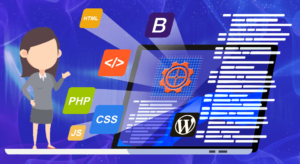
The Role of Playtesting in Game Development: How to Polish and Refine Your Game
Game Development is a complex and creative process that involves the collaboration of talented designers, programmers, artists, and writers. As the gaming industry continues to evolve and produce more ambitious projects, the importance of playtesting cannot be emphasized enough. Playtesting is a crucial step that allows developers to gather valuable feedback, identify flaws, and fine-tune their games to create a memorable and immersive experience for players. In this blog, we will explore the significance of playtesting in game development and provide valuable insights into how to conduct effective playtesting sessions to polish and refine your game.
Understanding the Playtesting Process
Playtesting is the process of evaluating a game’s mechanics, design, and overall experience by having individuals (playtesters) play the game and provide feedback. This process is carried out at various stages of development, from early prototypes to near-complete versions. Playtesting is not just about identifying bugs but also about gaining insight into player experiences, interactions, and emotions.
Before diving into playtesting, developers must define clear objectives for each session. Whether it’s testing specific mechanics, gauging overall difficulty, or evaluating narrative impact, having well-defined goals is essential to extract relevant and actionable feedback.
The Benefits of Playtesting
Identifying Gameplay Issues:
Playtesting uncovers gameplay problems that might not be apparent to the development team. Playtesters’ fresh perspectives allow developers to spot imbalances, confusing mechanics, or potential bottlenecks that may negatively impact the player’s experience.
User Experience Improvements:
Understanding player behavior and emotions during playtesting helps in refining the overall user experience. Developers can adjust difficulty levels, streamline tutorials, and enhance interactions to ensure players remain engaged and satisfied.
Narrative and Storytelling:
Playtesting is instrumental in evaluating the effectiveness of the game’s narrative and storytelling elements. It helps determine whether the plot is engaging, whether characters are relatable, and if players feel connected to the game’s world.
Balancing and Tuning:
Fine-tuning is a crucial aspect of game development, and playtesting provides essential data to balance various aspects of the game, such as character abilities, enemy difficulty, and resource management.
Preparing for Playtesting
Building a Playtesting Group:
Recruit a diverse group of playtesters, including both experienced gamers and newcomers to the genre. A varied pool of perspectives will reveal a broad range of feedback and insights.
Defining Protocols:
Establish clear protocols for playtesting sessions, including the length of play sessions, the information to collect, and the type of feedback desired. This ensures consistency and comparability across different playtests.
Creating Playtesting Surveys:
Prepare well-structured questionnaires or surveys to gather structured feedback from playtesters. These can include open-ended questions as well as rating scales to quantify player experiences.
Playtesting Environment:
Provide a comfortable and distraction-free environment for playtesters. Minimize interruptions and distractions to ensure they can focus solely on the game.
Conducting Playtesting Sessions
Observation and Note-taking:
Observe playtesters during their sessions and take detailed notes of their actions, reactions, and feedback. Recording gameplay sessions can also be helpful for later analysis.
Encouraging Honest Feedback:
Encourage playtesters to be candid in their feedback, both positive and negative. Assure them that their honest opinions are invaluable for the game’s improvement.
Collecting Metrics:
Use in-game metrics, such as completion rates, time taken to complete tasks, and death counts, to quantify player performance objectively. These metrics complement qualitative feedback.
Debriefing and Follow-up:
After playtesting sessions, hold debriefing discussions with playtesters to delve deeper into their experiences and gather additional insights.
Analyzing Playtest Feedback
Categorizing Feedback:
Organize playtest feedback into different categories, such as gameplay mechanics, visuals, narrative, and user interface. This segmentation helps focus on specific areas for improvement.
Identifying Patterns:
Look for recurring feedback themes and issues across multiple playtesters. These patterns indicate critical areas that require attention.
Prioritizing Changes:
Prioritize the identified issues based on their impact on the player experience and the effort required for implementation. Address high-impact issues first and iterate through subsequent playtesting sessions.
Implementing Playtest Feedback and Iterative Development
Once you have collected valuable feedback from playtesters and identified areas for improvement, it’s time to implement changes and iterate on your game. This iterative development process allows developers to continuously refine their game based on player input and evolving design decisions. Here’s how to effectively implement playtest feedback and leverage iterative development:
Addressing Critical Issues:
Begin by addressing critical issues or game-breaking bugs first. These are the issues that significantly impact the gameplay experience and need immediate attention. Solving such problems ensures that subsequent playtesting sessions can focus on more refined aspects of the game.
Prioritizing Feedback:
Since you may receive a vast amount of feedback from playtesters, it’s crucial to prioritize changes based on their importance and feasibility. Categorize feedback into “must-have,” “nice-to-have,” and “low-priority” changes. This approach enables you to focus on essential improvements without getting overwhelmed.
Incremental Changes:
Avoid making sweeping changes all at once. Instead, implement changes incrementally and conduct playtesting after each iteration. This way, you can assess the impact of each modification and fine-tune it further if needed. Small, controlled adjustments ensure you don’t inadvertently introduce new issues.
Fine-tuning Balancing:
Balance is a delicate aspect of game development, and playtesting provides valuable data for refining it. Analyze playtest metrics, such as player completion rates and average time to complete tasks, to identify areas that require better balancing. Make gradual adjustments and observe how they affect the overall gameplay experience.
Iterating on Level Design:
If your game features multiple levels or stages, pay close attention to level design. Playtesting can reveal areas that are too challenging, too repetitive, or confusing for players. Iterate on level design based on player feedback to create a more enjoyable and engaging progression.
Involving the Development Team:
Share playtest results and feedback with the entire development team. Encourage discussions and brainstorming sessions to explore solutions to identified issues. Involving team members from different disciplines ensures a holistic approach to game improvement.
Maintaining a Testing Cycle:
As you implement changes and iterate on the game, continue the playtesting cycle. Regularly invite new playtesters, as well as some returning ones, to gauge the effectiveness of your improvements. Each playtesting iteration brings new perspectives and insights, allowing you to create a refined game with a broader appeal.
Post-Launch Playtesting and Long-term Support
Even after the game’s release, playtesting remains a valuable tool for ongoing support and updates. Post-launch playtesting helps identify any unforeseen issues that emerged after widespread player engagement. Additionally, developers can use playtesting to gather feedback for future updates, expansions, or downloadable content (DLC). Here’s how to leverage playtesting for post-launch support:
Monitoring Player Feedback:
Pay close attention to player feedback on forums, social media, and review platforms. Players often provide valuable insights and suggestions that can guide post-launch updates.
Data-Driven Decisions:
Utilize in-game analytics to monitor player behavior, engagement, and progression. Analyzing player metrics helps you understand how players interact with your game and identify areas for improvement.
DLC and Expansions:
If you plan to release downloadable content or expansions, involve playtesting to ensure the new content integrates seamlessly with the existing game. Playtesting these additions ensures that they meet players’ expectations and maintain the overall quality of the game.
Bug Fixing and Patches:
Playtesting remains essential for post-launch bug fixing and patches. Identifying and resolving issues promptly improves player satisfaction and ensures the longevity of your game.
Community Involvement:
Engage with your game’s community and incorporate their feedback into future updates. Players who feel heard and valued are more likely to remain loyal to your game and recommend it to others.
Playtesting is an indispensable part of game development that empowers developers to craft outstanding gaming experiences. By carefully conducting playtesting sessions, analyzing feedback, and iteratively refining the game, developers can create polished, engaging, and immersive games that captivate players and leave a lasting impression. Embrace playtesting as an opportunity to embrace player perspectives and make your game the best it can be.
Successful playtesting will lead to a game that not only aligns with the developer’s vision but also resonates with the players, making it an unforgettable and enjoyable gaming experience for all. Game development is an ongoing journey that extends far beyond the game’s initial release. Successful developers continuously adapt to player feedback, industry trends, and technological advancements. Embrace playtesting as a continuous process, not just a one-time activity. Continue refining and evolving your game to keep it relevant and engaging.












